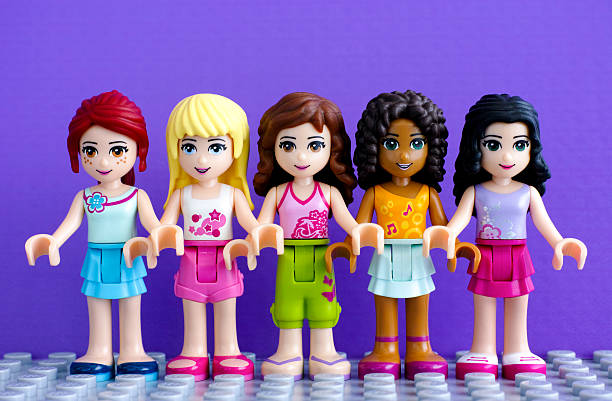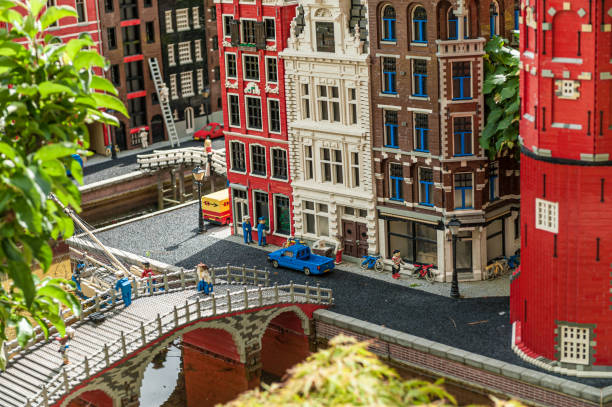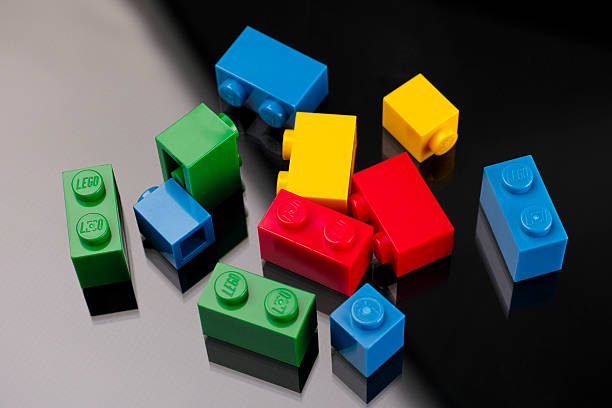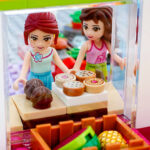LEGO bricks are more than just toys—they’re a canvas for creativity, a tool for learning, and a passion for collectors. With over 400 billion LEGO bricks in existence, it’s no surprise that managing a collection can feel overwhelming. Whether you’re a parent navigating a sea of bricks in your child’s room, an adult fan of LEGO (AFOL) with a dedicated collection, or someone who loves building, organizing your LEGO is essential for maximizing enjoyment and minimizing chaos. This comprehensive guide explores groundbreaking strategies for organizing LEGO, from innovative storage solutions to advanced sorting techniques, ensuring your collection is always ready for your next masterpiece.
Organizing Lego Bricks Is More Important Than Think
Whether you want to display your creations or avoid clutter, mastering the art of LEGO organization can revolutionize the entire building experience. For LEGO enthusiasts, young and adult, the challenge isn’t just about building, but also managing the piles of bricks afterwards. The quest for the best LEGO storage goes beyond aesthetics; it’s about convenience, creativity, and the preservation of your treasured sets. Organizing LEGO bricks isn’t just about keeping them tidy, it’s about enhancing your building experience. Here’s why:
- Unleash Creativity: A well-organized collection lets you quickly find the pieces you need, sparking inspiration for new builds. For example, finding that perfect red 2×4 brick for a castle wall becomes effortless with a sorted system.
- Save Time and Reduce Stress: No more hunting through piles for that one elusive piece, which can frustrate both kids and adults. A 2022 survey of LEGO enthusiasts found that 70% of collections are dominated by unsorted bricks, leading to wasted time and reduced enjoyment.
- Maximize Space: Proper storage keeps your living area safe and clutter-free, especially important in homes with children where stray pieces can be a tripping hazard.
- Preserve Value: For collectors, organization helps maintain the condition and value of rare sets, protecting them from damage or loss.
- Educational Benefits: Organizing LEGO teaches children valuable skills like categorization, responsibility, and problem-solving, making it a fun family activity.
Whether you’re building with toddlers or curating a museum-worthy collection, organization is the foundation of a fulfilling LEGO journey.
Beyond the Bin: Rethinking What ‘Organized LEGO’ Actually Means
Most blogs talk about tossing bricks into color-coded bins—but that’s just the start. Organizing LEGO isn’t about hiding the mess; it’s about creating a system that reflects how you build, display, and even preserve memories.
Build-Centric Storage Improves Creativity
Instead of organizing solely by color or shape, some builders sort by function: hinges, wheels, windows, etc. This method supports idea-driven building rather than rummaging through red bricks for a specific part. LEGO Masters contestants often use this strategy to boost build speed and inspiration.
Clear Storage Reinforces Discipline and Encourages Clean-up
Transparent stackable drawers or labeled cases—such as IKEA Alex drawers or tackle boxes—turn clean-up into a satisfying process, especially for kids. When they can see where each piece goes, organizing becomes part of the play routine, not a chore.
Vertical Storage = Space Saving + Visual Motivation
Wall-mounted units or modular pegboard systems (e.g., IKEA SKÅDIS) offer visibility and accessibility. Displaying sorted bricks on the wall invites more frequent building sessions and minimizes clutter creep into other rooms.

Assessing Your LEGO Needs: A Personalized Approach
Before diving into storage solutions, take a moment to understand your collection. Consider these factors:
- Size: How many pieces do you have? A small collection of a few hundred pieces requires different solutions than a 50,000-piece hoard.
- Usage: Do you primarily build sets from instructions, engage in free building, or display your creations? For example, instruction-based builders might prefer sorting by set, while free builders may opt for color or type.
- Space: Where will your LEGO live? A dedicated room allows for expansive systems like cabinets, while a small apartment might need compact, wall-mounted solutions.
- Budget: Are you looking for budget-friendly options like dollar-store bins, or are you willing to invest in premium storage like LEGO’s official storage boxes?
By answering these questions, you can tailor your organization strategy to fit your unique needs. For instance, a family with young children might prioritize safety and accessibility, while a collector might focus on preservation and display.
Classification Strategies: The Basics Of Storage
Sorting is the first step toward a functional system. Here are the most effective methods, each with its strengths and weaknesses:
| Sorting Method | Best For | Pros | Cons |
|---|---|---|---|
| By Color | Free building, visual projects | Easy to select pieces for color-themed builds, visually appealing | Time-consuming for large collections, less practical for set rebuilding |
| By Size | Quick access, inventory management | Speeds up finding specific pieces (e.g., 2×2, 2×4), scalable | Requires more initial effort, less intuitive for young builders |
| By Type | Versatile building, collectors | Organizes bricks, plates, tiles, minifigs, etc., for easy access | Can be complex for very large collections |
| By Set | Rebuilding sets, young builders | Simplifies rebuilding, keeps sets intact | Less flexible for free building, requires more storage space |
Example: A parent shared on Reddit that sorting by type (e.g., bricks, plates, minifigs) helped their 4-year-old son build more independently, as he could easily find pieces by shape rather than color. Conversely, an AFOL with a 10,000-piece collection preferred sorting by set to quickly rebuild complex models like the LEGO Tree House (3036 pieces).
Pro Tip: For young builders, focus on sorting by shape or type rather than color, as it’s more intuitive and encourages creativity. For collectors, sorting by set or type preserves the integrity of rare pieces.
Storage Solutions: From Classic to Cutting-Edge
Once your LEGO is sorted, you need the right storage. Here are some innovative options:
- Drawers and Cabinets: Perfect for large collections, offering easy access and scalability. Akro-Mils storage cabinets, praised by collectors on X, are durable and customizable, with small drawers for specific parts.
- Bins and Boxes: Portable and versatile, ideal for smaller collections or playrooms. LEGO’s Classic Large Creative Brick Box doubles as a storage solution and playmat, available for as low as $26 during sales.
- Shelves: Great for displaying built sets while keeping loose pieces stored below. Floating shelves save floor space and add a modern touch.
- Wall-Mounted Organizers: These save floor space and keep LEGO off the floor, reducing tripping hazards. Hanging organizers, as suggested by Wicked Brick, are perfect for small collections or children’s rooms.
- Portable Options: For travel or small spaces, tote bags or stackable containers are lifesavers. The LEGO Iconic 4-Piece Organizer Tote and Playmat is a favorite for its dual functionality as a playmat and storage bag.
Innovative Twist: IKEA’s BYGGLEK storage boxes are LEGO-compatible, allowing you to build directly onto them, blending storage with creativity. For collectors, Cobra Storage Systems offer specialized racks that are highly effective for organizing part-out sets, as endorsed by enthusiasts on X.
Sustainable Option: Repurpose household items like old tackle boxes or shoe organizers for eco-friendly storage. For example, one builder upcycled a vintage sewing box to store minifigs, adding a unique aesthetic to their collection.
Display Solutions: Showing Off Your Masterpieces
Displaying your LEGO builds is just as important as storing the pieces. Here are stylish and functional options:
- Shelving Units: Dedicate a wall or section of a room to showcase your builds. Modular shelving allows flexibility as your collection grows.
- Shadow Boxes: Protect and display smaller sets or minifigs while keeping them dust-free. These are ideal for showcasing rare minifigs like those from the LEGO Star Wars series.Of course, the display methods are not limited to the dark box. Collectors, hobbyists or children’s LEGO storage can all use LEGO minifigure display ideas to show their creativity and expand different display methods.
- Floating Shelves: Sleek and space-saving, perfect for larger models like the LEGO Millennium Falcon. They integrate well with modern home decor.
- Dedicated Display Cases: For collectors, bespoke cases from Wicked Brick protect sets from dust and damage while highlighting their beauty.
Design Tip: Integrate your LEGO display with your home’s aesthetic. Use neutral wooden tones or LEGO brick colors to create a cohesive look. For example, a collector used floating shelves in a living room to display LEGO Architecture sets, blending them seamlessly with minimalist decor.

Advanced Organization Techniques: For the Serious Builder
For those who want to elevate their LEGO organization, consider these advanced techniques:
- Inventory Software: Apps like BrickLink or Rebrickable allow you to catalog your collection digitally, tracking every piece and set. This is invaluable for collectors managing thousands of pieces.
- Labeling Systems: Use labels for drawers or bins to quickly identify contents. The BRICK ARCHITECT’s LEGO Brick Labels cover over 1000 parts, making them a go-to for serious builders.
- Minifig Organization: Dedicate separate storage for minifigs and accessories. Display cases or small drawers keep them organized and protected.
- Instruction Storage: Keep instructions in binders, magazine sleeves, or comic book storage boxes to easily reference them when rebuilding sets. One enthusiast transformed a pile of crumpled instructions into a tidy system using this method.
Tech Integration: For tech-savvy builders, a spreadsheet or database can track your collection. Some even use barcode scanners for precision, especially for rare sets like the LEGO Architecture Studio.
Real-Life Inspiration: How LEGO Fans Tackle Storage Challenges
Sometimes the best ideas come from fellow enthusiasts. Here are three standout approaches:
- The Family LEGO Library
One family converted a guest bedroom into a LEGO “library” with floor-to-ceiling sorting drawers, instruction manuals in binders, and display shelving for completed builds. A play mat in the middle provides a build space, making cleanup seamless. - The Rotating Color Wall
A teen builder used a slotted shoe organizer on the back of a closet door to hold bricks by color. When not in use, it’s hidden. When building, it unfolds like a color palette. - The Digital-First Builder
Instead of keeping physical instruction booklets, one collector scanned all manuals into a digital archive and used labeled containers for each set. This minimized clutter and helped with faster re-building after storage.

Care And Maintenance: Avoiding Clutter
Organization isn’t a one-time task—it requires ongoing effort. Here’s how to maintain your system:
- Regular Sorting Sessions: Set aside time every few months to sort new pieces or reorganize as your collection grows. A monthly “LEGO cleanup day” can keep things manageable.
- Involve Family: Make organizing a family activity. It’s a great way to teach kids responsibility and teamwork while bonding over LEGO.
- Deal with Duplicates: Decide whether to keep, sell, or donate duplicates to manage space. Donating to local schools or charities can give unused pieces a new life.
Psychological Benefits: A well-organized LEGO collection can reduce anxiety and enhance the building experience, creating a calming and inspiring environment. Studies suggest that organized spaces improve focus and creativity, making this a win-win for builders of all ages.
Organizing LEGO Isn’t Just Storage—It’s an Art of Playful Control
Organizing LEGO collection is an investment in your building experience. Creating an organized LEGO environment doesn’t mean hiding the fun, it means enhancing it. Choosing the right sorting and storage methods can inspire your creativity, save time, and get the most out of your collection. Whether you’re an amateur builder, a parent, or an experienced collector, there’s something for everyone. From LEGO storage and display tips to clever LEGO sorting boxes, your perfect solution starts with understanding your building style and building your system around it. Embrace the process and keep your LEGO journey organized and inspired.
Citations:


